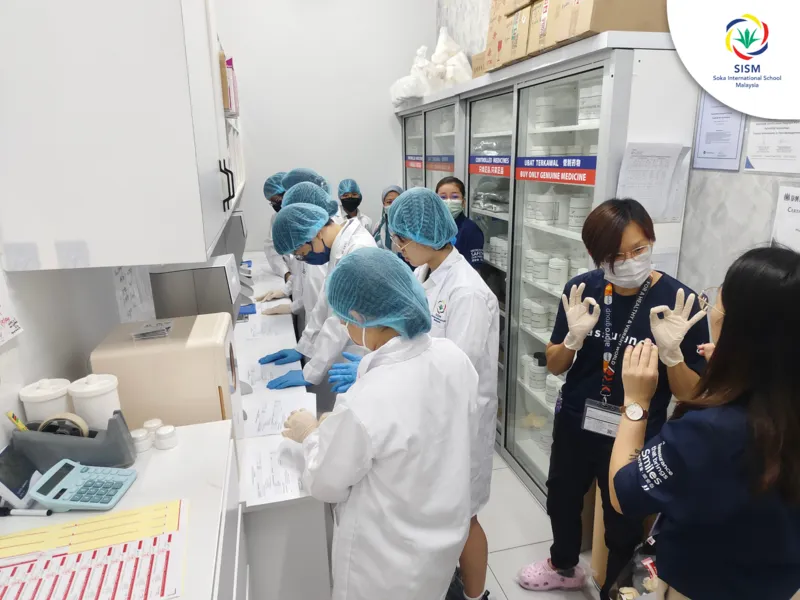Technology is part and parcel of today’s international and private school classroom environments. In this two-part article, early childhood development expert Shen-Li Lee looks at the types of technology international and private schools students are likely to encounter, and explores some of the benefits of incorporating technology into the learning process.
For many parents – who fondly remember the good old days of chalkboards and textbooks – today’s technologically advanced classrooms, equipped with the latest and greatest gadgets and devices, are unfamiliar territory.

Actually, technology in the classroom is nothing new. In fact, it has been around for decades. It is only over the last couple of years, though, that technology has been making massive inroads into schools and the education system, particularly in the international and private schools, with many boasting 1:1 device-to-student ratios. Indeed, the role of technology in the classroom has changed dramatically in recent years, leading to discussion and debate among educators and parents as to whether technology is a helpful or harmful force in the learning process.
Given the increasing significance that technology plays in our lives today, it makes sense that it should be integrated into our children’s education – and not just in a “by the way” fashion – because education is about preparing children for the real world and technology is a big part of that world.
To better understand the impact of technology in classrooms, we took a look at how schools have integrated technology into their curricula and how technology has transformed the learning environment.
HOW TECHNOLOGY IS USED IN THE CLASSROOM

Technology has been incorporated into the classroom through a variety of means, from tablets and laptops, to digital cameras and smart boards. Through these devices, schools have implemented various educational and productivity resources, such as:
- Blogs
- Emails
- Social Media – Edmodo
- Virtual learning platforms – FROG, Moodle, Google sites
- Electronic communications programs – Panther, Google Programs
There are no limits to the way technology can be used in the classroom. Many schools are innovating new and exciting ways to enhance education with technology. It is impossible to cover all the ways that technology is being used in the classroom, but here are a few examples on how some schools are changing the face of education.
It used to be only the professionals in sports who recorded their performance so they could improve their techniques and skills by reviewing the recordings. Now, easy access to video cameras and programs that allow frame-by-frame viewing, make these resources available to students in classes like physical education and music. The ability to review their performance from a third party perspective offers students greater scope for improvement.
Programs like Google Classroom allow teachers to set and receive paperless (and thus environmentally friendly) class assignments, which enable greater communication and collaboration in ways that were not possible through conventional teaching methods. Discussions can be conducted to include students in other classes, other schools, and even other parts of the world. Resources are also easily shared among students through this interface.

Websites like the World Education Games offer a platform for students around the world to compete against each other in friendly competitions on math, science and literacy.
Schools also utilize a variety of learning portals, such as Busy Things, Reading Eggs, Mathletics, Education City, and MyiMaths – to name a few. These learning portals offer supplementary resources to reinforce the lessons taught in class. They may be set as homework or they can be completed as practice exercises to bolster the student’s learning.
The vast collection of online resources allows students to participate in “flipped learning” – where they access material on a particular subject before applying it to activities in the classroom. For instance, a class learning about the Paralympics is able to view recordings of Paralympians in action. Video recordings from deep-sea divers offer students an insight to life the in the depths of the oceans like never before. Flipped resources have allowed students to take their assignments and projects to a whole new level, surpassing the quality of the work from students without these resources.
The growing number of innovative apps for smart devices makes it easy for students to create anything they can think of. They can use Garage Band to make their own musical masterpieces, iMovie to record their own Hollywood-like movies, Explain Everything to create animations, Book Creator to facilitate the creation of professional books, Floors to construct their own videogame, and the list goes on… These apps enable them to take their creations to a whole new professional level that was never possible before.
This is Part One of a two-part article. You can read Part 2 of the article here
You may also be interested to read:







































